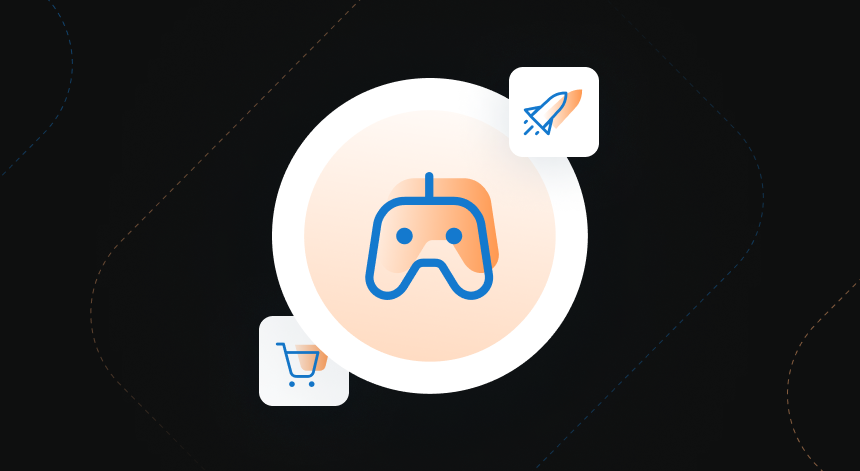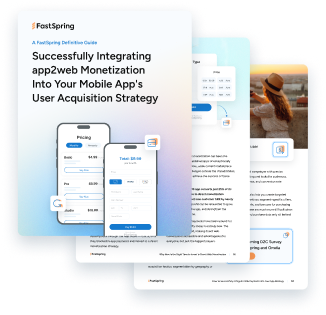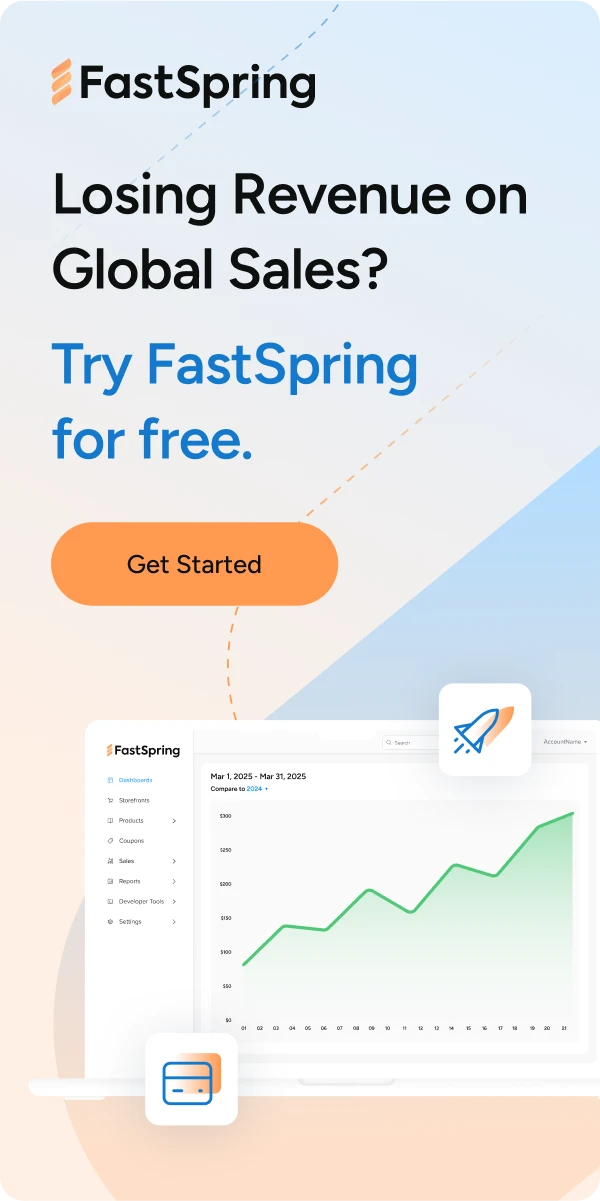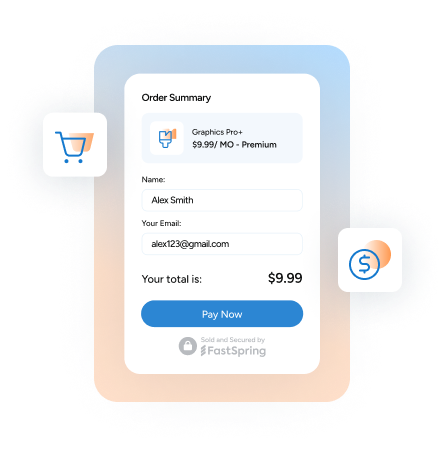Direct-to-consumer (D2C) transactions have been at center stage in recent months, with major legal shakeups across the U.S., Japan, Brazil, and the EU poised to open up and unlock additional revenue channels for mobile publishers.
With these regulations and rulings stacking up, it’s never been easier to directly sell in-app purchases to your players across the globe.
And the market is already taking action. Big players like Epic Games, Spotify, Patreon, and many others have already implemented in-app steering to their web shops in the U.S. and are selling in-app purchases via their web shops today.
In this article, we’ll show you why you should be actively developing a plan to go D2C and what impact it can have on your business strategy going forward.
D2C Is Allowed Worldwide Today — Including Steering in the US
There has been a fear in the market for years that offering D2C is against the rules,” or that it will ultimately lead to negative impacts on revenue for publishers that pursue it.
But the reality is that that isn’t true.
While publishers need to stay in compliance with app store policies, monetizing your game via your web store isn’t prohibited. In fact, in the United States, developers are allowed to actively steer users from in-app (on iOS) to the web store to make purchases.
Plus, regulatory shifts in the EU, Japan, and Brazil show that D2C strategies aren’t just applicable in the U.S. but are a global trend. Laws such as the EU’s Digital Markets Act and Japan’s “Smartphone Act” mandate support for third-party payments and alternative app stores, opening new opportunities for game publishers. Brazil follows closely, with investigations and legislative proposals that signal growing global pressure to loosen platform control.
Regardless of legislative actions being taken globally the fact remains — current app store policies allow for purchases to be made via web stores right now.
Why Should Game Publishers Go D2C?
Establish a Direct Relationship With Your Players
Perhaps the most important part of D2C — if not also the most undersold — is that when you sell directly to your players, you aren’t just capturing more revenue. You’re also building a direct connection with your players.
The reality of app marketplaces today is that they provide a place where you can get access to many more players than you’d have if you only sold and marketed your game yourself, but with all those different access points, your player base is fragmented at best. Maybe your players play on mobile, the web, Xbox, Steam Deck, and beyond.
Without a unifying backbone behind all of those different platforms, you don’t really have a real relationship with your players.
By creating a D2C presence, you unlock a direct line of communication instead of “renting” your audience from app marketplaces. You control your channels, your data, and ultimately, your relationships and communication with your players. A direct relationship with players means you can market to them and engage with them as they play your games across different platforms, today and into the future.
With direct player access, you can leverage marketing tactics such as retargeting pixels, targeted social ad campaigns, community-driven advocacy, and authentic creator partnerships. All of these tools let you reconnect with your players regardless of platform, drive boosted conversion rates, and build brand loyalty over time. And according to a Harvard study, increasing retention (via loyalty) by just 5% delivers 25% to 95% higher profits over time.
Open Up User Acquisition Analytics by Linking Ads to Your Web Store
Direct player relationships open up the opportunity to run user acquisition (UA) campaigns that give more power back to you, the publisher.
Many publishers currently run UA campaigns that link only to App Store pages. They get more players into their games this way, but the trade off is giving the marketplace most of their player data. Attribution is therefore limited, and it’s much harder to know which ads are performing, which channels are driving VIP sign ups, and how to optimize ad spend.
By instead driving traffic to your own web store, you regain visibility into this crucial part of the player journey. You can collect first-party data such as traffic source, session behavior, conversion rates, lifetime value, and much more, all directly attributed to the campaign. You also avoid the signal loss that happens when players only interact with the marketplace ecosystem.
With stronger attribution, you can then refine targeting, optimize creatives, and allocate budget to the channels that drive the most revenue.
Boost Revenue With D2C
Third-party marketplaces like the App Store and Play Store take a major cut of revenue from each transaction, but that’s often seen in today’s industry as just the cost of doing business.
But this doesn’t need to be the case. Adopting a D2C model via a web shop significantly boosts profitability for publishers.
In mobile games, 2% of your player base can represent 50 to 70% of your mobile game’s in-app purchase revenue, according to a recent Udonis study. These players are the most engaged and therefore most likely to go to a web shop to make a purchase, especially when they get more value for every dollar spent.
Let’s take a look at an imaginary publisher, Yolkbyte Studios, to illustrate this point.
Yolkbyte launched the game Eggblast Arena three years ago, and it has a loyal following of players. Eggblast Arena generates a monthly revenue of $1,000,000 per month through the app and play stores today. After the standard 30% app store fee, they’re left with $700,000.
To improve margins, Yolkbyte launches a web store using FastSpring to power their payments. Within a month, 25% of their revenue shifts to web, and instead of paying 30% on those web transactions, they are only paying 6%.
Here’s how the math works:
| Channel | Gross Revenue | Fee | Net Revenue |
| Mobile | $750,000 | 30% | $525,0500 |
| Web | $250,000 | 6% | $235,000 |
| Total | $1,000,000 | – | $760,000 |
That’s $60,000 more each month, or $720,000 annually, just by going D2C.
And this isn’t just a theoretical thought experiment. Playtika reported in Q1 2025 that 25.4% of its total revenue came from D2C channels. Publishers everywhere are seeing the same results.
This is just a starting point. As you invest more in steering and migrate more players over to your web shop, the percentage of revenue that you get to keep will grow. It’s also important to keep in mind that this scales with your game. If you’re bringing in $10M per month, this figure goes up 10x. And any further shifts of revenue to your web shop push that number up even further.
Web Purchases are More Common (and Stickier Than Ever)
While the regulatory pressure around the world indicates that D2C will continue to grow, some worry about whether or not the regulations will stick around, or if marketplaces will comply with them. Whether steering rules are reinstated or regulations continue changing, the fact is that once players learn about a web store and understand the additional value there, they’re much more likely to purchase from it in the future.
Even just one or two years ago, purchasing in-game products via a web store was still a bit unorthodox. Players were skeptical about why they should purchase outside of the mobile game, or whether they were even on the correct website when they tried. Publishers were nervous about the ins and outs of implementing a web shop, and fears of drawing attention to the web store from marketplaces kept publishers from monetizing via their web stores.
Now, the most successful publishers in the market have changed tactics and built web stores.
The result? Normalization of web store purchase flows, and players who are more willing to engage with a D2C storefront across all games.
Some publishers have already implemented in-game steering to their web stores. But even those that haven’t are much more sophisticated when it comes to guiding players to their web shops via Discord, Reddit, and other channels outside of their games. Plus, once players are on a web store, they have access to their preferred local payment methods and currencies, the ability to buy more in a single purchase, and so much more — thanks to partners like FastSpring.
Steering Drives Changes in Player Behavior
The Apple ruling in the United States has had a major impact on D2C for mobile publishers. Where previously publishers had to use channels other than the game itself to drive web store traffic, now they can include a link directly to the web store in app. This change has driven a significant shift of transaction volume from the app store to the web store itself.
What does that mean? Players are immediately seeing the benefits of the web store and are adapting to new purchase flows quickly.
The publishers who already had a D2C motion in place were in a position to snap up the opportunity to drive player traffic to their web stores nearly immediately. And even if we go back to a scenario where steering is no longer allowed, those players are now aware of the web stores and will still be able to make purchases there, even if publishers can’t advertise directly in-app. That kind of marketing is invaluable.
The Time for D2C Is Now — Partner With FastSpring
We’ve already seen major shakeups for the biggest players in the industry, thanks to legislative rulings across the globe. The most successful publishers have seen immediate increases in purchase volume via their web shops. And have already converted a larger portion of their player base into web shop purchasers regardless of future regulatory action. D2C isn’t going away, it’s the future.
But it’s not too late to go D2C if you haven’t already. With FastSpring, you can partner with a Merchant of Record who already helps some of the biggest publishers in the mobile gaming industry monetize their web stores, and we’re ready to help you. Set up a call with one of our industry experts today to get started, or to read more about how FastSpring supports game developers, visit fastspring.gg.










